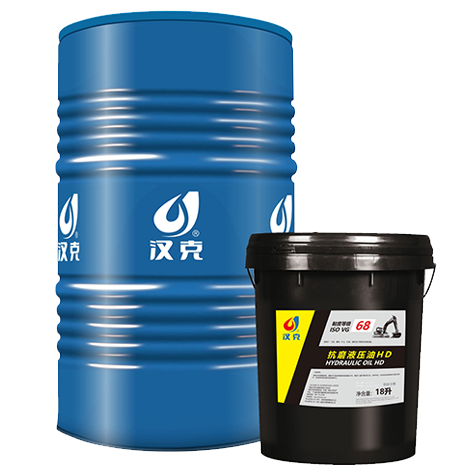Frequently asked questions and answers for Hank lubricants and greases
What are the components of Hank lubricants?
Hank fluorinated oil is a series of low molecular weight, fluorine terminated hexafluoropropylene epoxide homopolymers. The polymer chain is completely saturated and contains only carbon, oxygen, and fluorine, without hydrogen.
Hank High Performance Lubricant Application
What applications can Hank lubricants be used for?
Hank lubricants are suitable for applications that require non flammability, oxidation resistance, material compatibility, high temperature stability, and chemical corrosion resistance. Including the following industries:
automobile
Aerospace
Chemical processing
Electronics and semiconductors
Corrugated paper machines, pulp and paper making
Industrial Maintenance, Repair, and Operations (MRO)
Please refer to the Hank High Performance Lubricant Product Overview or Hank Lubricant Product Selection Guide for more information.
How is the NLGI consistency of various models of Hank grease?
Lubricating grease is a mixture of base oil and thickener. Hank grease uses a special extremely small particle size polytetrafluoroethylene (PTFE) with high thickening ability.
Different viscosity base oils can be used in lubricating grease to meet different temperature and load conditions.
Additives are usually added to lubricating grease to enhance rust resistance, improve load-bearing capacity, and reduce wear. Our standard grease model is NLGI (American Lubricating Grease Association) No. 2 grease; However, we can produce NLGI grease models 000 to 6 according to customer requirements. For more information on NLGI model options, please refer to Hank High Performance Lubricant Product Overview.
What preparatory work needs to be done before using Hank lubricant in bearings?
Before adding Hank grease, the original lubricating grease, oil, or rust preventive oil used during storage should be removed from the bearings. If non perfluoropolyether (PFPE) lubricating oil or grease is left in the bearing, they will form carbon deposits at high temperatures, which may cause accelerated bearing failure.
If Hank lubricant is used, does it require continuous lubrication?
For most applications, the relubrication interval can be extended by months or years. For example, in bearing applications, corrugated paper machines typically require grease replenishment every three to twelve months, depending on the operating rate of the equipment. In the sealing system, Hank lubricant has excellent durability, so there is no need for re lubrication.
Can Hank grease be mixed with other greases?
Although Hank grease does not react with other greases or cause decomposition or any hazardous reactions, it cannot prevent the failure of other lubricants due to high temperature and oxidation. Therefore, we do not recommend mixing Hank lubricants with any non perfluoropolyether (PFPE) lubricants or greases.
Characteristics of Hank High Performance Lubricants
What certifications have Hank Lubricants obtained?
Specific product models have obtained the following certifications:
MIL-Spec PRF-27617 grease is approved for use in aerospace applications.
Lubricants certified by NSF H1 can be used for lubrication of food machinery and equipment that come into accidental contact with food.
After independent testing and confirmation by major oxygen manufacturers and testing institutions (including BAM), it can be used for LOX (liquid oxygen) and GOX (pure oxygen).
DIN 3536: Lubricants can be used for indoor installation, gas distribution, and gas pipeline valves.
DIN EN 377: Lubricants can be used for gas appliances and related accessories.
What manufacturing certifications have Hank Lubricants obtained?
Hank Lubricants is manufactured based on the following certifications:
ISO 9001 Certified Quality Management System
ISO 14001 certified environmental management system
Is Hank lubricant flammable?
no Hank lubricating oil (grease) is non flammable and has no flash point.
How stable is Hank lubricant when exposed to chemicals?
Hank perfluoropolyether (PFPE) lubricating oil and lubricating grease thickened with polytetrafluoroethylene (PTFE) have excellent chemical stability. Hank lubricants and greases do not react with most chemicals (except Lewis acid and alkali metals) or cause their degradation.
Hank high-performance lubricants are not only resistant to oxygen and reactive gases, but also rarely react with all chemicals used in most industries. For more information, see Hank Lubricants: chemical stability or Gas Compatibility.
Is Hank lubricant compatible with non-metallic materials?
Yes. For over 60 years, Hank lubricants and greases have been used to lubricate plastic and elastomer components. For more relevant information, please refer to the Hank Lubricant Plastic and Elastomer Compatibility Document.
Pollution is one of the most serious challenges facing bearings. Debris, rust preventive oil, and other residues can limit lubrication performance, which may lead to failure. Properly handling bearings and using high-quality lubricants, such as Hank high-performance lubricants, can reduce equipment downtime and maintenance costs.
What is the best practice to ensure proper lubrication of bearings?
Follow the following five steps and watch the video to ensure proper lubrication of the bearings:
Ensure that the work area is clean and appropriate tools are used.
Remove the bearing sealing ring.
Clean the bearings with solvent and dry them.
Apply lubricating grease, check for appropriate amount of grease and ensure uniform distribution.
Replace the sealing ring and cover.
For more information, refer to the cleaning guide.










